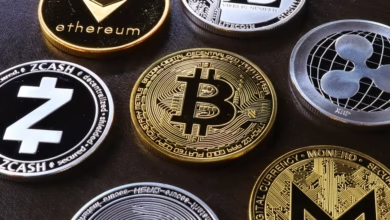Gold in Turbulent Times: Understanding Its Role as a Safe-Haven Asset and Investment Strategy Amid Economic Uncertainty

In an era marked by economic volatility, soaring inflation, and geopolitical unrest, investors are increasingly seeking refuge in safe-haven assets. Among these, gold has long stood out as a time-tested store of value, with its allure deeply rooted in both historical significance and contemporary relevance. This article explores the enduring appeal of gold during times of uncertainty, examining its relationship with inflation and the various investment strategies available to both novice and seasoned investors. We will also delve into the impact of central bank policies, compare gold with emerging assets like cryptocurrencies, and analyze historical trends to gain insights into future performance. Finally, we will discuss how geopolitical tensions shape demand and prices, highlighting gold's pivotal role in diversifying investment portfolios. Join us as we unpack the multifaceted nature of gold and its place in today's financial landscape.
- 1. **Gold as a Safe-Haven Asset: Navigating Economic Uncertainty and Inflation**
- 2. **Investment Strategies in Gold: ETFs, Physical Holdings, and Mining Stocks Explained**
1. **Gold as a Safe-Haven Asset: Navigating Economic Uncertainty and Inflation**
Gold has long been regarded as a safe-haven asset, particularly during periods of economic uncertainty and inflation. Its intrinsic value, scarcity, and historical significance as a store of wealth contribute to its appeal in challenging times. When economic conditions become volatile—whether due to market fluctuations, geopolitical tensions, or financial crises—investors often flock to gold as a means of preserving their wealth. This behavior can be attributed to gold's negative correlation with traditional financial markets; when stocks and bonds decline, gold often remains stable or appreciates in value.
Inflation, in particular, poses a significant threat to purchasing power, leading investors to seek assets that can retain value. Gold has historically served as a hedge against inflation, as its price tends to rise when the cost of living increases. Unlike fiat currencies, which can be printed in unlimited quantities, gold's supply is limited, making it a more reliable store of value in times of rising prices.
Moreover, gold's global acceptance and liquidity enhance its standing as a safe-haven asset. It is traded in virtually every country, making it accessible to investors regardless of their geographic location. This universality gives gold a unique advantage over other potential hedges, such as cryptocurrencies, which may face regulatory hurdles and volatility.
In conclusion, gold's enduring status as a safe-haven asset is rooted in its ability to navigate economic uncertainty and inflation effectively. As investors seek stability in an unpredictable financial landscape, gold continues to be a favored choice for those looking to safeguard their portfolios against the risks associated with economic fluctuations.
Gold has long been regarded as a safe-haven asset, particularly during periods of economic uncertainty. Its intrinsic value, coupled with its historical performance, makes it a go-to choice for investors looking to safeguard their wealth. When economies face turbulence—such as recessions, political instability, or financial crises—gold tends to retain its value, as it is not directly tied to any currency or economic system. This inherent stability is a primary reason why investors flock to gold when confidence in traditional financial markets wanes.
The relationship between gold prices and inflation is another critical aspect of its appeal. Typically, gold is seen as a hedge against inflation, as its price often rises when the purchasing power of fiat currencies declines. As central banks increase money supply or implement low-interest-rate policies to stimulate growth, the risk of inflation rises, driving investors toward gold as a store of value. This demand can subsequently push gold prices higher, reinforcing the asset’s role as a protective measure.
Investing in gold can take several forms, each with its advantages and disadvantages. Exchange-traded funds (ETFs) that track the price of gold offer a convenient way to gain exposure without the need for physical storage. On the other hand, purchasing physical gold, such as coins or bullion, provides a tangible asset that can be held outside of traditional financial systems. However, it requires secure storage and insurance. Investing in mining stocks can also be an option, as these companies benefit from rising gold prices. Yet, they carry additional risks related to operational performance and market fluctuations.
Central bank policies significantly impact gold prices, as central banks are major players in the gold market. When central banks adopt expansionary monetary policies, such as quantitative easing or lowering interest rates, it often leads to increased demand for gold. Investors may seek gold during these times as a hedge against currency devaluation. Conversely, if central banks tighten monetary policy or raise interest rates, gold may see a decrease in demand, as higher yields on bonds and other assets can draw investment away from gold.
Comparing gold to cryptocurrencies, investors often debate which serves as a better hedge against inflation. Gold’s historical track record and tangible nature provide reassurance for many, while cryptocurrencies present a more volatile and speculative option. Although some view cryptocurrencies like Bitcoin as a digital alternative to gold, their price fluctuations and regulatory uncertainties can make them less reliable during economic crises.
Historical trends in gold prices reveal valuable insights into its future performance. Over the decades, gold has experienced significant price increases during major economic downturns, reinforcing its status as a protective asset. As geopolitical tensions rise, such as conflicts or trade disputes, the demand for gold typically surges, leading to price increases. This behavior underscores the asset's role in diversifying investment portfolios, as it often behaves differently from equities and bonds, providing a counterbalance during turbulent times.
In conclusion, gold's enduring appeal as a safe-haven asset is driven by its intrinsic value, its relationship with inflation, the impact of central bank policies, and its historical performance during crises. Whether through ETFs, physical gold, or mining stocks, gold remains a crucial component of a diversified investment strategy, especially in times of uncertainty when geopolitical tensions and economic instability loom large.
2. **Investment Strategies in Gold: ETFs, Physical Holdings, and Mining Stocks Explained**
Investing in gold can take various forms, each with its own advantages and considerations. Three primary strategies include investing in gold exchange-traded funds (ETFs), acquiring physical gold, and purchasing mining stocks.
Gold ETFs are investment funds that track the price of gold and trade on stock exchanges like regular stocks. They offer a convenient way to gain exposure to gold without the need to buy, store, or insure physical gold. ETFs typically have lower fees compared to mutual funds, and they provide liquidity, allowing investors to buy and sell shares easily. Additionally, they often mirror the price movement of gold closely, making them a straightforward option for those looking to invest in gold as a safe-haven asset.
On the other hand, investing in physical gold involves purchasing tangible assets such as gold coins, bullion, or jewelry. This strategy appeals to those who prefer having a physical representation of their investment. Physical gold can act as a hedge against economic instability and inflation, but it comes with challenges such as storage, insurance, and potential premiums over the spot price. Furthermore, selling physical gold may be less straightforward compared to liquidating ETFs.
Mining stocks represent another avenue for gold investment. By purchasing shares in companies that explore, extract, and sell gold, investors can potentially benefit from both gold price appreciation and company growth. However, investing in mining stocks comes with additional risks, including operational challenges and market volatility. While these stocks may provide leveraged exposure to gold prices, they can also be affected by factors unrelated to gold, such as management decisions, labor costs, and geopolitical issues.
Ultimately, the choice between ETFs, physical gold, and mining stocks depends on an investor's objectives, risk tolerance, and investment strategy. A diversified approach that includes a mix of these options may help mitigate risks while capitalizing on the unique benefits each investment type provides.
In conclusion, gold has consistently proven to be a reliable safe-haven asset amidst economic uncertainty, providing a hedge against inflation and a means of portfolio diversification. Its historical resilience during times of crisis, coupled with the ongoing impact of central bank policies and geopolitical tensions, underscores its enduring appeal. As investors navigate the complexities of modern markets, understanding the various avenues for gold investment—whether through ETFs, physical gold, or mining stocks—becomes essential. While cryptocurrencies present an alternative, gold's established track record and intrinsic value often make it the preferred choice for those seeking stability. Ultimately, as we look to the future, gold's role in investment strategies will likely remain significant, offering not only a safeguard against economic turbulence but also an opportunity for growth in an increasingly volatile world.





